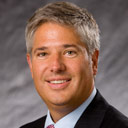Brian P Heermance

June 06, 2007 | New York Law Journal
Sophisticated User Doctrine Under N.Y. State LawBrian P. Heermance, a partner at Morrison Mahoney, and Kevin A. Hickman, an associate at the firm, write that several Federal Court opinions recognized the sophisticated user doctrine as a viable defense for product manufacturers as early as the 1990s, but New York State courts have been reluctant to extend the defense beyond suits involving prescription drugs or medical devices. However, a recent opinion may signal the beginning of state acceptance of the doctrine.
By Brian P. Heermance and Kevin A. Hickman
5 minute read

April 10, 2008 | New York Law Journal
Construction Sites: Proximate Cause, Partial RedressBrian P. Heermance, a partner at Morrison Mahoney, and Kevin A. Hickman, an associate at the firm, write that, generally speaking, when an owner or general contractor is named as a defendant in an action arising out of a construction site accident, its defense often centers around an attempt to establish either that the plaintiff was the sole proximate cause of his accident, or that it is entitled to partial indemnification under its contract.
By Brian P. Heermance and Kevin A. Hickman
8 minute read
February 22, 2010 | New York Law Journal
Lead Paint Litigation: An OverviewBrian P. Heermance, a partner at Morrison Mahoney, and Kevin A. Hickman, an associate at the firm, write: Because of the substantial verdicts at stake, litigation over the responsibility for exposure to lead-based paint has been hotly contested throughout the country. Before engaging in any such litigation, counsel should be aware of the various peculiarities regarding lead paint cases in New York courts.
By Brian P. Heermance and Kevin A. Hickman
13 minute read

February 03, 2009 | New York Law Journal
Ruling Helps Clarify When Parents May Be Liable for Children's ActsBrian P. Heermance, a partner at Morrison Mahoney, and Kevin A. Hickman, an associate at the firm, review a recent decision that underscores a common question many parents face, which is whether and to what degree they may be held legally responsible for the negligent acts of their children. They examine various theories of liability and discuss situations where parents may be held liable to third parties for the wrongful acts of their children.
By Brian P. Heermance and Kevin A. Hickman
9 minute read

December 07, 2010 | New York Law Journal
An Overview of Elevator and Escalator LiabilityBrian P. Heermance, a partner at Morrison Mahoney, and Kevin A. Hickman, an associate with the firm, write that it is easy to forget that elevators and escalators are complex machines that are capable of a variety of mechanical errors and failures. Given their nature, and the various ways passengers may be injured, counsel that litigate cases involving either type of equipment should be prepared to deal with issues regarding contractual relationships among various possible defendants as well as issues of res ipsa loquitur in lieu of specific evidence of defective equipment.
By Brian P. Heermance and Kevin A. Hickman
10 minute read

November 30, 2009 | New York Law Journal
Anatomy of a Wrongful Death Action in New YorkBrian P. Heermance, a partner at Morrison Mahoney, and Kevin A. Hickman, an associate at the firm, write that despite a wrongful death claim's similarity to a negligence cause of action, the elements of the claim, statute of limitations, evidentiary rules and recoverable damages all differ from the rules governing negligence claims.
By Brian P. Heermance and Kevin A. Hickman
9 minute read

January 07, 2008 | New York Law Journal
Ski Resort Liability: An OverviewBrian P. Heermance, a partner with Morrison Mahoney, writes that injured skiers are often deemed to have accepted the risk inherent in skiing, whether the injury is caused by other persons or equipment on the trail or the configuration of the trail. However, ski resort operators cannot always escape liability, as shown in a recent case.
By Brian P. Heermance
6 minute read
November 01, 2010 | New York Law Journal
When a 'Sudden Emergency' Results in HarmBrian P. Heermance, a partner at Morrison Mahoney, and Christopher P. Keenoy, an associate at the firm, review cases that demonstrate the successful application of the sudden emergency defense to automobile actions, and cases where the defense is found inapplicable, as the driver should have been aware of potential hazards.
By Brian P. Heermance and Christopher P. Keenoy
8 minute read
Trending Stories
- 1South Florida Attorney Charged With Aggravated Battery After Incident in Prime Rib Line
- 2'A Death Sentence for TikTok'?: Litigators and Experts Weigh Impact of Potential Ban on Creators and Data Privacy
- 3Bribery Case Against Former Lt. Gov. Brian Benjamin Is Dropped
- 4‘Extremely Disturbing’: AI Firms Face Class Action by ‘Taskers’ Exposed to Traumatic Content
- 5State Appeals Court Revives BraunHagey Lawsuit Alleging $4.2M Unlawful Wire to China



